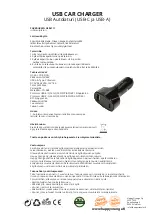
4-8
79MH0-74E
Long distance driving
1) Be sure to perform safety checks
before starting a trip.
2) Take rest at certain intervals to prevent
an accident which may occur when you
are sleepy or tired.
79MM04009
Night time driving
1) Drive more slowly at night than in the
daytime, for the visual range is
restricted at night.
2) Don’t overtake other vehicles at night.
Darkness bothers your sense of speed
and hinders your judgement on the
vehicle-to-vehicle distance.
3) Don’t use the high headlight beam
unless its use is inevitable. Its dazzle
may blitz the driver of the oncoming
vehicle, thus causing an accident.
4) Always keep the window glasses clean.
Don’t operate the windshield wiper
when the windshield glass is dry or the
wiper blade and glass may get dam-
aged.
72F-08-021
72F-08-022
Margin For Safety
It is important to allow yourself a margin for
safety during driving so that you can cope
with erroneous or unexpected driving of other
drivers. For that, observe the following.
• Drive at a safe speed.
• Maintain a sufficient distance between
your vehicle and the vehicle ahead.
• Don’t force yourself to overtake other
vehicles.
• Don’t make quick start, hard steering or
sudden stops.
• Allow an ample time in the driving
schedule.
• Observe traffic rules and regulations.
Conclusion
A perfect driver does not exist. The
endeavour of every motorist should be to
strive for perfection. Safety consciousness
not only ensures your safety and the safety
of other road users, it also helps reduce
the wear and tear on your vehicle, pro-
longs its life, gives more mileage and
ensures a comfortable driving experience.
Follow the do’s and don’ts listed, and
driving will never be the same again.
EXAMPLE
EXAMPLE
EXAMPLE
















































